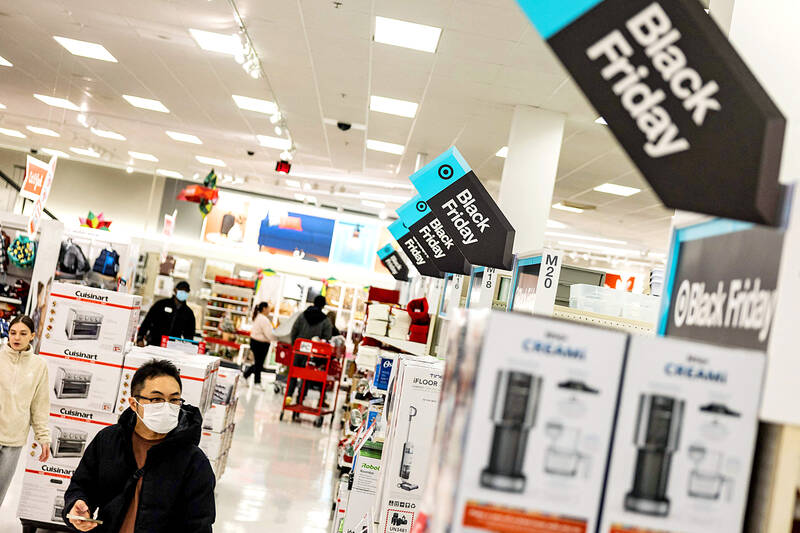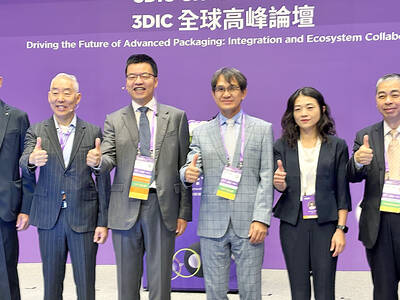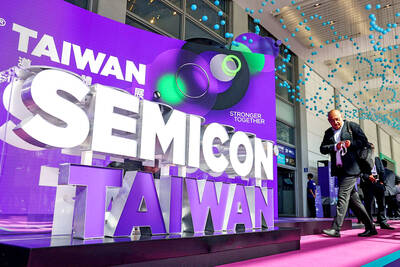US shoppers are coming out in force this holiday season, but the festiveness is being tempered by inflationary pressures that have abated but not completely faded.
After the sticker shock during the latter stages of the COVID-19 pandemic, a familiar frustration has settled in toward consumer prices that remain broadly elevated even if they have stopped rising rapidly.
Americans are “ready to open their wallets this holiday season,” said the Conference Board ahead of Black Friday — the day after Thanksgiving, which this year, falls on Nov. 28 — that traditionally sees US stores kick off the Christmas shopping season with steep discounts. “US consumers plan to spend more than last year, but inflation reduces how far their dollars can go.”

Photo: Samuel Corum, AFP
In this environment, nobody expects to pay the full price for items.
“Holiday shoppers are likely to increase their budgets this year versus last year but remain selective and are looking for discounts,” Morgan Stanley said in a note.
The investment bank’s survey found that 35 percent planned to spend more this holiday season. But nearly two-thirds would skip a purchase if an item is not adequately discounted, meaning a price cut of more than 20 percent.
“It’s gonna be a good year, but I don’t think that growth is going to be spectacular because consumers are still under pressure,” GlobalData managing director and retail analyst Neil Saunders said.
Inflation remains above the US Federal Reserve’s 2 percent long-term target, rising to 2.6 percent on an annual basis last month from 2.4 percent in September. But that’s significantly below the peak level of 9.1 percent in June 2022.
“There is still a perception among consumers that things are quite difficult,” Saunders said. “So people are being quite cautious and careful in their spending.”
How US president-elect Donald Trump’s looming presidency will affect inflation remains to be seen. Industry groups have warned that tariffs favored by the Republican could reignite pricing pressures.
The National Retail Federation (NRF) projected that a Trump tariff proposal floated during the campaign would dent US consumer budgets by as much as US$78 billion annually.
But while tough potential trade actions are already preoccupying Washington trade groups, tariffs are not on consumer radars for this shopping season, Saunders said.
One challenge this year will be the shortness of the season. Black Friday falls at the latest possible date on Nov. 29, shortening the stretch between Turkey Day and Christmas on Dec. 25.
But the impact of that dynamic on this year’s sales should not be overstated. Retailers in recent years have pulled the holiday shopping season ahead, with some vendors launching online “Black Friday” promotions as early as October.
Among the companies that have already begun discounts: the big-box chains Walmart Inc and Target Corp, electronics giant Best Buy Co and home-improvement retailer Home Depot Inc. Amazon.com Inc officially launched “Black Friday Week” on Thursday last week.
The NRF has projected holiday spending growth of between 2.5 and 3.5 percent in this season compared with the year-ago period, to as much as US$989 billion over the two-month period.
Economists with the trade group have pointed to an easing of gasoline prices as a supportive factor.
Online sales are projected to grow as much as nine percent this season, extending a long-term trend. Black Friday itself has become a big occasion for online shopping, along with “Cyber Monday” three days later.
“Over time, we’ve moved from a period where it was just Black Friday, and maybe a little of the weekend, to it being a period of discounting that starts very early,” Saunders said. “It’s seasonal discounts.”
There has been a diminishment of “doorbuster” sales that are known to draw hordes of waiting crowds, sometimes resulting in injury or worse. Instead, increasing numbers of consumers are spreading out their purchases or opting to click through Black Friday promotions at home.

With this year’s Semicon Taiwan trade show set to kick off on Wednesday, market attention has turned to the mass production of advanced packaging technologies and capacity expansion in Taiwan and the US. With traditional scaling reaching physical limits, heterogeneous integration and packaging technologies have emerged as key solutions. Surging demand for artificial intelligence (AI), high-performance computing (HPC) and high-bandwidth memory (HBM) chips has put technologies such as chip-on-wafer-on-substrate (CoWoS), integrated fan-out (InFO), system on integrated chips (SoIC), 3D IC and fan-out panel-level packaging (FOPLP) at the center of semiconductor innovation, making them a major focus at this year’s trade show, according

DEBUT: The trade show is to feature 17 national pavilions, a new high for the event, including from Canada, Costa Rica, Lithuania, Sweden and Vietnam for the first time The Semicon Taiwan trade show, which opens on Wednesday, is expected to see a new high in the number of exhibitors and visitors from around the world, said its organizer, SEMI, which has described the annual event as the “Olympics of the semiconductor industry.” SEMI, which represents companies in the electronics manufacturing and design supply chain, and touts the annual exhibition as the most influential semiconductor trade show in the world, said more than 1,200 enterprises from 56 countries are to showcase their innovations across more than 4,100 booths, and that the event could attract 100,000 visitors. This year’s event features 17

EXPORT GROWTH: The AI boom has shortened chip cycles to just one year, putting pressure on chipmakers to accelerate development and expand packaging capacity Developing a localized supply chain for advanced packaging equipment is critical for keeping pace with customers’ increasingly shrinking time-to-market cycles for new artificial intelligence (AI) chips, Taiwan Semiconductor Manufacturing Co (TSMC, 台積電) said yesterday. Spurred on by the AI revolution, customers are accelerating product upgrades to nearly every year, compared with the two to three-year development cadence in the past, TSMC vice president of advanced packaging technology and service Jun He (何軍) said at a 3D IC Global Summit organized by SEMI in Taipei. These shortened cycles put heavy pressure on chipmakers, as the entire process — from chip design to mass

Germany is to establish its first-ever national pavilion at Semicon Taiwan, which starts tomorrow in Taipei, as the country looks to raise its profile and deepen semiconductor ties with Taiwan as global chip demand accelerates. Martin Mayer, a semiconductor investment expert at Germany Trade & Invest (GTAI), Germany’s international economic promotion agency, said before leaving for Taiwan that the nation is a crucial partner in developing Germany’s semiconductor ecosystem. Germany’s debut at the international semiconductor exhibition in Taipei aims to “show presence” and signal its commitment to semiconductors, while building trust with Taiwanese companies, government and industry associations, he said. “The best outcome